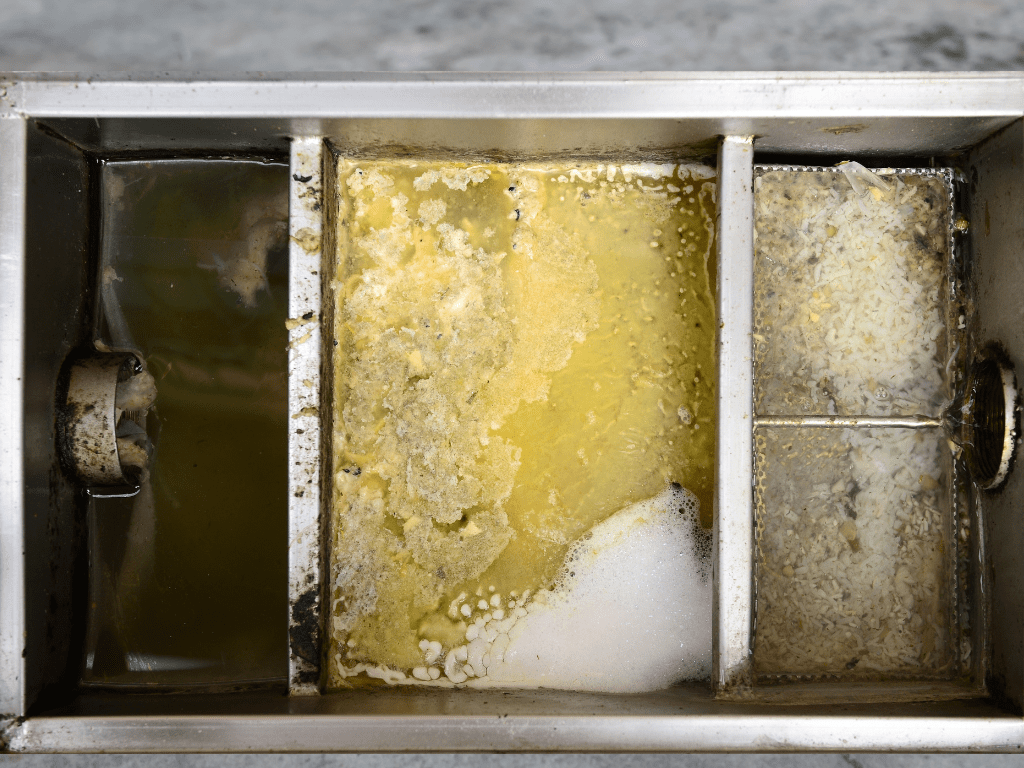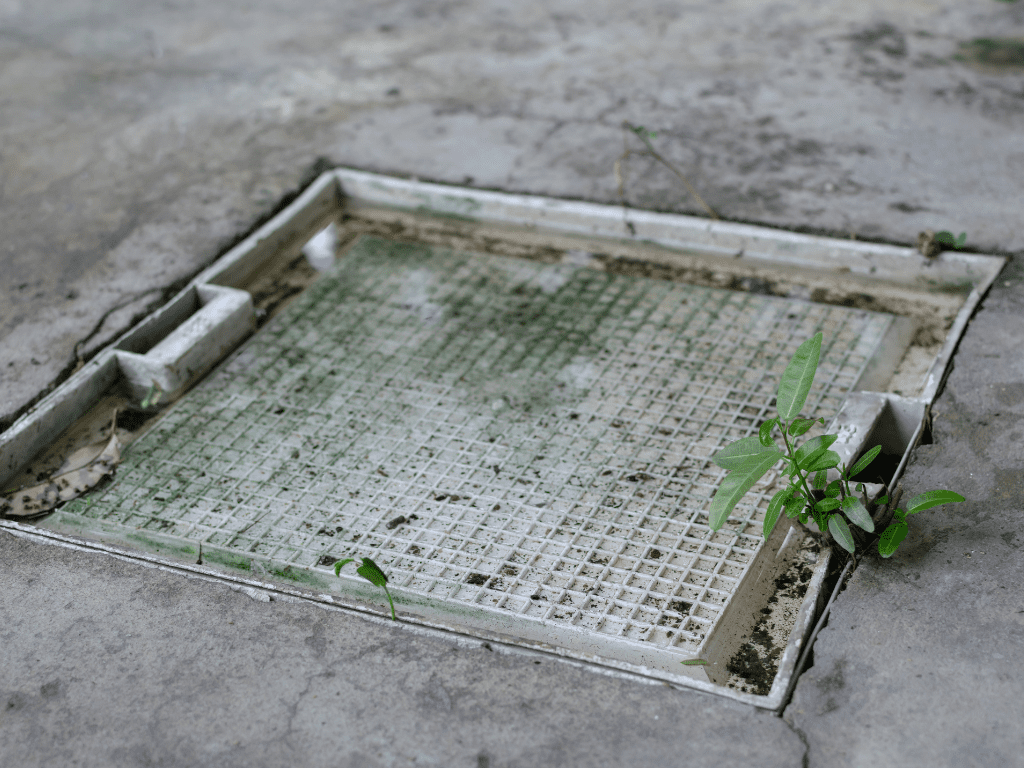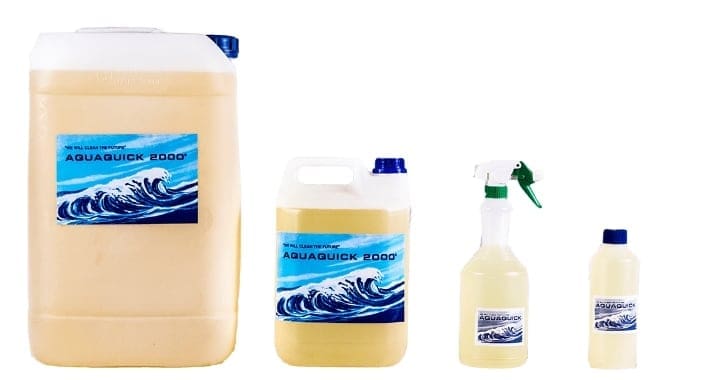I. Introduction
A. Importance of Grease Trap Maintenance in Restaurants:
Grease traps play a crucial role in maintaining the cleanliness and functionality of restaurant kitchens. Without proper maintenance, grease traps can become clogged, leading to foul odors, drainage issues, and potential environmental hazards. Regular maintenance ensures that grease traps continue to effectively trap grease, oil, and solid waste, preventing them from entering the sewer system and causing blockages.
B. Overview of Grease Traps and Their Role in Kitchen Waste Management:
Grease traps, also known as grease interceptors or grease recovery devices, are plumbing devices designed to intercept most greases and solids before they enter wastewater disposal systems. In restaurant kitchens, grease traps are essential for managing kitchen waste generated during food preparation and cleaning activities. They help prevent the accumulation of fats, oils, and grease (FOG) in sewer lines, which can cause costly and disruptive sewer backups and environmental pollution.
C. Significance of Proper Installation and Cleaning Practices for Grease Traps in Ensuring Operational Efficiency and Regulatory Compliance:
Proper installation and regular cleaning of grease traps are critical for maintaining their efficiency and compliance with local regulations. Improperly installed or neglected grease traps can lead to costly repairs, legal fines, and potential closure of the establishment. By adhering to best practices in installation and cleaning, restaurant owners can ensure the smooth operation of their grease traps, minimize the risk of environmental contamination, and comply with health and safety regulations.
II. Understanding Grease Traps
Explanation of Grease Trap Functionality:
Grease traps function as mechanical filters that separate and capture grease, oil, and solid food particles from wastewater before it enters the sewer system. They typically consist of a large tank or interceptor placed in the kitchen’s wastewater discharge line. As wastewater flows through the trap, fats, oils, and grease float to the top, while solid particles settle at the bottom. The relatively clear water then exits the trap and enters the sewer system.

B. Types of Grease Traps:
Passive Grease Traps:
Passive grease traps rely on gravity to separate grease and solids from wastewater. They are relatively simple in design and do not require external power sources. Passive grease traps are suitable for smaller restaurants or establishments with low to moderate grease production.
Automatic Grease Recovery Units (AGRU):
Automatic grease recovery units, also known as grease interceptors, are more advanced systems that use mechanical or electronic means to remove grease from wastewater. AGRUs are equipped with sensors, pumps, and other mechanisms to automatically remove and store grease, providing continuous grease separation and removal. They are ideal for high-volume kitchens or facilities with heavy grease loads.
C. Sizing Considerations for Grease Traps:
Factors Affecting Grease Trap Size:
The size of a grease trap depends on various factors, including the volume of wastewater generated, the type of kitchen activities, and local regulations. High-volume kitchens with extensive frying or cooking operations require larger grease traps to accommodate the increased grease production.
Calculating Grease Trap Size:
Grease trap sizing is typically determined based on the flow rate of wastewater in gallons per minute (GPM) and the retention time required for effective grease separation. Local plumbing codes and regulations often provide guidelines for calculating the appropriate size of grease traps based on the specific needs of the establishment.
III. Grease Trap Installation Process
A. Site Assessment and Planning:
Before installing a grease trap, a thorough site assessment is necessary to determine the most suitable location for placement. Factors such as proximity to kitchen fixtures, accessibility for maintenance, and compliance with local regulations must be considered. Proper planning ensures optimal functionality and efficiency of the grease trap system.
B. Permits and Regulations:
Obtaining the necessary permits and adhering to local regulations is essential for grease trap installation. Regulations may vary depending on the jurisdiction and the type of establishment. It’s crucial to consult with local authorities and obtain the required permits to ensure compliance with health, safety, and environmental regulations.
C. Choosing the Right Grease Trap:
Selecting the appropriate grease trap is paramount to its effectiveness in trapping grease and solids. Factors to consider include the volume of wastewater generated, the size of the establishment, and the types of kitchen activities. Consulting with a professional plumber or grease trap specialist can help determine the most suitable grease trap for the specific needs of the restaurant.
D. Installation Steps:
- Location Selection: Identify the optimal location for installing the grease trap based on the site assessment and plumbing layout. Ensure that the chosen location allows for easy access for maintenance and cleaning.
- Excavation and Preparation: Excavate the area according to the dimensions specified for the grease trap. Proper excavation and preparation of the site are essential to ensure stable placement and proper functionality of the grease trap.
- Installation of Grease Trap: Carefully install the grease trap in the excavated area, ensuring that it is level and securely positioned. Follow the manufacturer’s guidelines for proper installation to prevent leaks or structural issues.
- Connection to Plumbing System: Connect the grease trap to the existing plumbing system, ensuring proper alignment and tight seals to prevent leaks. Proper connection ensures efficient flow of wastewater through the grease trap and into the sewer system.
E. Testing and Certification:
After installation, the grease trap must undergo testing to ensure that it functions correctly and complies with regulatory standards. This may involve conducting flow tests, leak checks, and other inspections to verify the integrity and effectiveness of the grease trap system. Once testing is complete and the grease trap meets the required standards, it can be certified for use.

IV. Grease Pit Cleaning
A. Importance of Regular Cleaning:
Regular cleaning of grease traps is essential to maintain their effectiveness in trapping grease and preventing blockages in the plumbing system. Neglecting to clean grease traps can lead to foul odors, drainage issues, and environmental contamination.
B. Signs Indicating the Need for Cleaning:
Several signs indicate that a grease trap requires cleaning, including foul odors emanating from drains, slow drainage, and visible grease buildup in the trap. Monitoring these signs helps identify when cleaning is necessary to prevent costly plumbing problems.
C. Frequency of Cleaning:
The frequency of grease trap cleaning depends on various factors, including the size of the trap, the volume of grease production, and local regulations. Generally, grease traps should be cleaned at least every three months to maintain optimal functionality.
D. Steps Involved in Grease Trap Cleaning:
- Preparations: Before cleaning the grease trap, ensure that all necessary safety precautions are in place, such as wearing protective gear and ensuring proper ventilation. Prepare the equipment and materials needed for cleaning.
- Removing Grease and Solids: Use appropriate tools to remove accumulated grease and solids from the grease trap. Scrapers, brushes, and vacuum pumps may be used to dislodge and remove grease buildup from the trap walls and components.
- Inspection and Maintenance: Inspect the grease trap components for signs of damage or wear during the cleaning process. Replace worn-out seals, gaskets, or other parts as needed to maintain the integrity of the grease trap.
- Disposal of Waste: Dispose of the collected grease and solids in accordance with local regulations. Grease and solid waste should be properly contained and disposed of to prevent environmental contamination.
E. Hiring Professional Services vs. DIY Cleaning:
While some restaurant owners may opt to clean grease traps themselves, hiring professional grease trap cleaning services offers several advantages. Professional cleaners have the expertise, equipment, and training to thoroughly clean grease traps and ensure compliance with regulatory standards. Additionally, outsourcing grease trap cleaning saves time and effort for restaurant staff, allowing them to focus on other essential tasks.
By following these steps for grease trap installation and cleaning, restaurant owners can ensure the effective operation of their grease trap systems and maintain compliance with regulatory requirements. Regular maintenance and proper cleaning practices are essential for preventing costly plumbing issues and ensuring the smooth operation of restaurant kitchens.

V. AquaQuick 2000: The Ultimate Cleaning Solution
A. Introduction to AquaQuick 2000:
AquaQuick 2000 is a revolutionary cleaning solution specifically designed for grease trap maintenance in restaurants. Its advanced formula is engineered to effectively break down grease, oil, and solid waste, ensuring the optimal performance of grease trap systems.
B. Features and Benefits of AquaQuick 2000:
Rapid Action Formula:
AquaQuick 2000 features a rapid-action formula that works quickly to dissolve grease and oil buildup within grease traps. This fast-acting solution saves time and minimizes downtime for restaurant operations.
Eco-Friendly Ingredients:
Unlike harsh chemical cleaners, AquaQuick 2000 contains eco-friendly ingredients that are safe for the environment and non-toxic to restaurant staff. Its biodegradable formula ensures minimal environmental impact without compromising cleaning effectiveness.
Effective Grease and Oil Removal:
AquaQuick 2000 is highly effective in removing stubborn grease and oil deposits from grease trap surfaces. Its powerful formula penetrates deep into grease trap components, breaking down grease molecules and facilitating easy removal during cleaning.
Safe for Pipes and Plumbing Systems:
One of the key benefits of AquaQuick 2000 is its compatibility with various types of pipes and plumbing systems. Unlike abrasive chemical cleaners that can corrode pipes, AquaQuick 2000 is gentle on plumbing infrastructure, preventing damage and prolonging system lifespan.
C. Application of AquaQuick 2000 in Grease Trap Cleaning:
Method of Application:
AquaQuick 2000 is typically applied directly to the grease trap using a sprayer or pouring method. The solution is evenly distributed throughout the grease trap, ensuring thorough coverage of all surfaces.
Efficiency in Breaking Down Grease and Oil:
Upon application, AquaQuick 2000 begins to work immediately, breaking down grease and oil molecules into smaller, more manageable particles. This process facilitates the removal of grease and oil during the cleaning process, leaving the grease trap clean and free of buildup.
Compatibility with Various Grease Trap Systems:
Whether the grease trap is passive or automatic, AquaQuick 2000 is compatible with a wide range of grease trap systems commonly used in restaurants. Its versatile formula ensures effective cleaning results across different types of grease traps.
D. Testimonials and Case Studies:
Numerous testimonials and case studies attest to the effectiveness of AquaQuick 2000 in grease trap maintenance. Restaurant owners and managers praise its ability to keep grease traps clean and odor-free, ultimately improving kitchen hygiene and reducing the risk of plumbing issues.

VI. Best Practices for Grease Trap Maintenance
A. Educating Restaurant Staff:
Proper education and training of restaurant staff on grease trap maintenance practices are essential for ensuring the longevity and efficiency of grease trap systems. Staff should be knowledgeable about the importance of proper waste disposal and the signs indicating the need for grease trap cleaning.
B. Implementing Proper Waste Disposal Practices:
Implementing proper waste disposal practices in the kitchen can help reduce the amount of grease and solid waste that enters the grease trap. Staff should be instructed to scrape plates and dispose of food scraps in designated bins to minimize grease buildup in the grease trap.
C. Regular Inspections and Maintenance Checks:
Regular inspections and maintenance checks should be conducted to identify any signs of grease trap issues, such as odors, slow drainage, or visible grease accumulation. Prompt detection and addressing of these issues can prevent costly repairs and ensure the continuous operation of grease trap systems.
D. Monitoring Grease Levels:
Monitoring grease levels within the grease trap is essential for determining the frequency of cleaning and maintenance required. Staff should regularly check grease trap levels and schedule cleaning accordingly to prevent overflow and maintain optimal grease trap performance.
By incorporating AquaQuick 2000 into grease trap maintenance practices and adhering to best practices for grease trap maintenance, restaurant owners can ensure the efficient operation of their grease trap systems and maintain compliance with regulatory standards.
VII. Environmental Impact and Legal Compliance
A. Environmental Concerns Related to Grease Traps:
Grease traps play a vital role in preventing the discharge of fats, oils, and grease (FOG) into wastewater systems, thereby reducing the risk of environmental pollution. When grease traps are not properly maintained or cleaned, they can become ineffective, leading to FOG buildup in sewer lines, which can result in sewer overflows, water contamination, and harm to aquatic ecosystems.
B. Legal Regulations and Compliance Standards:
Local, state, and federal regulations govern the installation, maintenance, and cleaning of grease traps to ensure environmental protection and public health. These regulations often include requirements for grease trap sizing, cleaning frequency, and proper disposal practices. Failure to comply with these regulations can result in fines, penalties, and legal liabilities for restaurant owners.
C. Importance of Responsible Disposal Practices:
Proper disposal of grease and solid waste collected from grease traps is essential for minimizing environmental impact. Grease and solid waste should be disposed of according to local regulations, which may involve recycling or proper disposal at authorized facilities. Implementing responsible disposal practices helps prevent pollution and protects natural resources.
VIII. Common Challenges and Solutions
A. Odor Control:
Grease traps can emit foul odors if not properly maintained or cleaned regularly. To control odors, restaurant owners can use odor-neutralizing products or additives specifically designed for grease traps. Additionally, ensuring proper ventilation and maintaining cleanliness in the kitchen can help mitigate odor issues.
B. Clogging Issues:
Clogging is a common issue in grease traps, especially when they become overloaded with grease and solid waste. Regular cleaning and maintenance are essential for preventing clogs. In cases of severe clogging, professional cleaning services may be required to remove blockages and restore proper functionality.
C. Grease Trap Overflow:
Grease trap overflow occurs when the grease trap reaches its capacity and cannot effectively trap additional grease and solid waste. This can lead to sewage backups, environmental contamination, and health hazards. Proper sizing of grease traps and adherence to cleaning schedules are crucial for preventing overflow incidents.
D. Solutions and Preventive Measures:
Implementing preventive measures such as regular inspections, maintenance checks, and cleaning schedules can help mitigate common grease trap challenges. Additionally, using advanced cleaning solutions like AquaQuick 2000 can enhance grease trap efficiency and prevent issues such as clogs and odors.

IX. Conclusion
A. Recap of Grease Trap Installation and Cleaning Importance:
Grease trap installation and regular cleaning are essential for maintaining the efficiency of grease trap systems and ensuring compliance with environmental regulations. Proper maintenance practices help prevent environmental pollution, sewage backups, and costly repairs.
B. Role of AquaQuick 2000 in Enhancing Cleaning Efficiency:
AquaQuick 2000 offers a reliable solution for grease trap maintenance, providing fast and effective cleaning results while minimizing environmental impact. Its advanced formula breaks down grease and oil buildup, ensuring optimal grease trap performance and compliance with regulatory standards.
C. Regular Maintenance and the Use of AquaQuick 2000 for Optimal Grease Trap Performance:
Regular maintenance, including cleaning and inspection, is crucial for preventing grease trap issues and ensuring uninterrupted restaurant operations. By incorporating AquaQuick 2000 into grease trap maintenance routines, restaurant owners can achieve optimal grease trap performance, minimize environmental impact, and comply with legal regulations.














